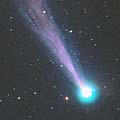
|
Although it had been locating low in the morning sky until early October, it turned to the evening sky, and now it is getting higher. It reached to 5.5 mag in early October (Oct. 6, Jose Carvajal). Very strongly condensed and easy to see. It keeps 6-7 mag until the end of October. In the Northern Hemisphere, it keeps observable in the evening sky until early January while fading gradually. In the Southern Hemisphere, it cannot be observable until next April when it becomes fainter than 15 mag.
Date(TT) R.A. (2000) Decl. Delta r Elong. m1 Best Time(A, h)
Oct. 14 13 51.90 38 27.6 1.083 0.837 47 6.4 19:40 (116,-34)
Oct. 21 15 9.94 38 3.2 1.011 0.892 52 6.6 19:48 (119,-26)
|
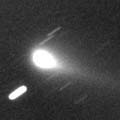
|
Now it is 10.7 mag (Oct. 6, Jakub Cerny). It is somewhat fainter than this ephemeris, however, it is well condensed and easy to see. The long dust tail is clearly visible. It keeps 9-10 mag until January, and observable in its best condition. It keeps 14 mag still in 2007 March, so it keeps visible visually for a long time.
Date(TT) R.A. (2000) Decl. Delta r Elong. m1 Best Time(A, h)
Oct. 14 2 8.65 10 21.5 0.712 1.699 166 9.4 0:40 (180, 45)
Oct. 21 2 9.11 8 47.2 0.694 1.687 172 9.3 0:13 (180, 46)
|
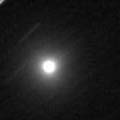
|
New comet discovered visually very near by Saturn. It is very bright, 9.4 mag on Oct. 5 (Juan Jose Gonzalez). But it was fainter than 12 mag in the photo on Sept. 30 (Tetuo Kudo). Probably, it brightened rapidly in early October. It is a short periodic comet with a period of 5.4 years. It may be one of the faint NEOs usually. The comet will be fading gradually after this. But it may fade out rapidly. It keeps locating in the morning sky until winter, then it keeps locating observable until next summer. But in the Northern Hemisphere, it becomes low in the south in 2007.
Date(TT) R.A. (2000) Decl. Delta r Elong. m1 Best Time(A, h)
Oct. 14 10 20.98 8 21.4 1.373 0.996 46 9.7 3:52 (254, 7)
Oct. 21 10 45.43 3 49.8 1.400 1.010 46 9.8 3:41 (259, 8)
|
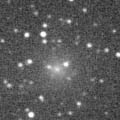
|
Although it was reported so faint as 17 mag at the discovery, it was actually much brighter as 14 mag (Aug. 21, Terry Lovejoy). Then it is brightening rather rapidly and it is already so bright as 11.7 mag (Oct. 12, Juan Jose Gonzalez). However, it is very diffuse, locating extremely low in the evening, so it is hard to see. It will pass only 0.17 A.U. from the sun in mid January, and reach to 2.5 mag. But it is not observable at that time. In the Southern Hemisphere, it appears at 5 mag in late January, then it keeps observable while fading gradually. But in the Northern Hemisphere, it is only observable until early November.
Date(TT) R.A. (2000) Decl. Delta r Elong. m1 Best Time(A, h)
Oct. 14 16 30.48 -14 27.4 2.593 2.066 48 11.8 19:40 ( 89, 24)
Oct. 21 16 35.42 -14 13.6 2.565 1.951 42 11.4 19:48 ( 85, 18)
|
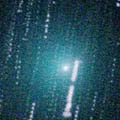
|
Recovered after 117 year blank since 1889. It brightened rapidly in mid July and reached to 8 mag. Then it kept bright at 8 mag with a large diffuse coma until early September. But it has already started fading. Now it is 10.9 mag (Oct. 10, Jakub Cerny). It will fade out rapidly after this. Because it is very diffuse, it can be invisible soon. In the Northern Hemisphere, it keeps locating very high in the evening sky for a long time after this. It moves around the Northern Pole, so it will be observable all night until November, although it becomes low in the morning.
Date(TT) R.A. (2000) Decl. Delta r Elong. m1 Best Time(A, h)
Oct. 14 20 35.61 73 19.7 0.671 1.324 103 11.6 19:40 (178,-18)
Oct. 21 21 41.43 72 17.8 0.694 1.385 108 12.3 19:48 (180,-17)
|

|
It had not been observed for a long time since June. When it appeared again in the morning sky, it has become much brighter than expected, 12.9 mag (Oct. 8, Y. Sugiyama). It keeps 12 mag until December and it is observable visually in excellent condition. Then it keeps observable until February when it becomes fainter than 18 mag in the Northern Hemisphere.
Date(TT) R.A. (2000) Decl. Delta r Elong. m1 Best Time(A, h)
Oct. 14 10 4.59 0 4.0 1.930 1.468 48 12.8 3:52 (259, 15)
Oct. 21 10 3.06 1 54.7 1.775 1.467 55 12.7 3:41 (254, 18)
|
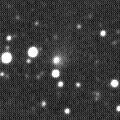
|
It is bright as 12.6 mag and visible visually (June 21, Juan Jose Gonzalez). It becomes too low in the evening to observe in October. But it will be getting higher in the morning sky after December. It keeps 13 mag until 2007 March, so it will be visible visually for a long time.
Date(TT) R.A. (2000) Decl. Delta r Elong. m1 Best Time(A, h)
Oct. 14 15 0.83 4 17.2 2.859 2.045 29 12.9 19:40 ( 92, -5)
Oct. 21 15 8.95 5 39.7 2.862 2.028 27 12.9 19:48 ( 89,-11)
|

|
A small outburst occured in late August, and it was visible visually, bright and strongly condensed, in early September. It is visible at 13.4 mag still now (Sept. 27, Seiichi Yoshida). Another small outburst happened in early October. Since it appeared in the morning sky in early July, it has been bright as 13 mag and visible visually. It is observable in good condition until winter.
Date(TT) R.A. (2000) Decl. Delta r Elong. m1 Best Time(A, h)
Oct. 14 4 22.71 31 48.1 5.150 5.847 130 13.3 2:54 (180, 23)
Oct. 21 4 20.69 31 51.2 5.075 5.848 137 13.3 2:25 (180, 23)
|

|
It has been lost since its discovery in 1986. The condition is good in this return. In calculation, it was expected to be 14 mag from autumn to winter. But actually, it must be much fainter than expected. Although it has been listed up as an observable target since May, it has not been recovered yet. It was probably in outburst and brightened unexpectedly at the discovery. In the Northern Hemisphere, it keeps observable until it fades out in next spring. When it becomes brightest in October and November, it will move away from the Milky Way. So it will be easier to recover.
Date(TT) R.A. (2000) Decl. Delta r Elong. m1 Best Time(A, h)
Oct. 14 18 58.52 -21 22.8 1.209 1.473 83 13.9 19:40 (106, 58)
Oct. 21 19 17.49 -20 48.2 1.229 1.451 80 13.9 19:48 (104, 54)
|

|
It was missed in 1999 due to the bad condition. The condition is good in this return. It will reach to 13.5 mag in November. Although it is too low in the Northern Hemisphere now, it locates high in the Southern Hemisphere. It must be already bright as 14 mag, but it has not been recovered yet. In the Northern Hemisphere, it will be getting higher gradually after mid October.
Date(TT) R.A. (2000) Decl. Delta r Elong. m1 Best Time(A, h)
Oct. 14 18 57.67 -43 54.4 0.866 1.218 81 14.5 19:40 ( 61, 63)
Oct. 21 19 23.96 -41 40.1 0.845 1.186 79 14.2 19:48 ( 66, 62)
|
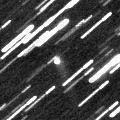
|
Now it is 14.3 mag and almost asteroidal (Sept. 20, Edwin van Dijk). Although the slight cometary activity was detected in late July, its faint tail became too hard to detect now. In the Northern Hemisphere, it keeps good condition after this. It keeps locating high until next spring. If it keeps asteroidal after this, it will be 14 mag at best. However, it may suddenly become active and brighten rapidly someday.
Date(TT) R.A. (2000) Decl. Delta r Elong. m1 Best Time(A, h)
Oct. 14 20 47.01 30 15.6 0.974 1.651 113 14.3 19:40 (174, 24)
Oct. 21 20 41.31 30 44.2 0.970 1.591 108 14.3 19:48 (165, 22)
|
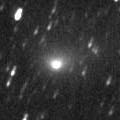
|
It reached up to 10.3 mag on July 7 (Juan Jose Gonzalez). Then it is fading gradually. Now it is 12.6 mag (Sept. 27, Seiichi Yoshida). In the Northern Hemisphere, it will get higher gradually after this. However, it will be too faint to see visually soon.
Date(TT) R.A. (2000) Decl. Delta r Elong. m1 Best Time(A, h)
Oct. 14 20 51.37 -31 1.3 1.447 1.970 105 14.4 19:40 (133, 84)
Oct. 21 21 2.47 -29 34.0 1.550 2.007 101 14.7 19:48 (118, 79)
|
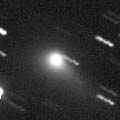
|
It had been observed at 10 mag in the evening sky from winter to spring. Although it has been unobservable since May, now it is appearing in the morning sky again. Now it is 14.0 mag (Sept. 25, Jakub Cerny), still visible visually.
Date(TT) R.A. (2000) Decl. Delta r Elong. m1 Best Time(A, h)
Oct. 14 9 42.11 25 15.2 3.663 3.307 61 14.4 3:52 (235, 4)
Oct. 21 9 48.23 24 51.3 3.639 3.376 66 14.5 3:41 (234, 6)
|
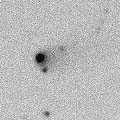
|
It has been visible at 13.5 mag for a long time since last autumn until spring. Although it had been unobservable for a while, now it is appearing in the morning sky again. It will be observable in good condition again at 14.5 mag in winter.
Date(TT) R.A. (2000) Decl. Delta r Elong. m1 Best Time(A, h)
Oct. 14 12 11.69 25 47.1 6.139 5.377 37 14.4 3:52 (255,-24)
Oct. 21 12 18.14 25 9.1 6.102 5.391 41 14.4 3:41 (254,-22)
|
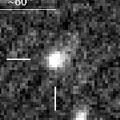
|
It had been unobservble for a long time. When it appeared again in the morning sky, it has showed a cometary activity and it has become much brighter than expected, as 15 mag. It may be visible visually at 13 mag. It keeps 14 mag until March. It is observable in good condition in the Southern Hemisphere. However, in the Northern Hemisphere, it rises only up to 20 degree in November, then it moves southwards and is only observable until December.
Date(TT) R.A. (2000) Decl. Delta r Elong. m1 Best Time(A, h)
Oct. 14 10 34.68 -5 42.9 2.765 2.100 39 14.9 3:52 (268, 13)
Oct. 21 10 47.33 -8 47.9 2.690 2.075 42 14.8 3:41 (270, 15)
|
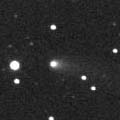
|
It is bright as 13.2 mag and visible visually (Sept. 27, Seiichi Yoshida). It keeps locating at the same altitude until December. But it will be too faint to see visually soon.
Date(TT) R.A. (2000) Decl. Delta r Elong. m1 Best Time(A, h)
Oct. 14 22 6.65 -23 3.3 2.692 3.358 124 15.2 20:35 (180, 78)
Oct. 21 22 6.84 -22 38.0 2.790 3.372 117 15.3 20:08 (180, 78)
|

|
It is observable in good condition at 15 mag in September and October.
Date(TT) R.A. (2000) Decl. Delta r Elong. m1 Best Time(A, h)
Oct. 14 0 5.98 62 55.9 0.576 1.401 123 15.3 22:31 (180, -7)
Oct. 21 23 38.56 54 29.4 0.635 1.484 129 15.5 21:38 (180, 1)
|
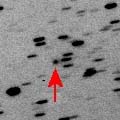
|
Now it is 16.5 mag (Sept. 2, Ken-ichi Kadota). It keeps 16 mag until December. It keeps observable until February when it becomes fainter than 18 mag.
Date(TT) R.A. (2000) Decl. Delta r Elong. m1 Best Time(A, h)
Oct. 14 9 10.68 12 47.5 1.768 1.608 64 15.6 3:52 (240, 18)
Oct. 21 9 26.07 10 14.7 1.733 1.624 66 15.6 3:41 (241, 20)
|

|
It was in major outburst unexpectedly and reached to 10.5 mag in its last appearance in 1999. It was already recovered in 2005 October. But it has not been observed for 1 year since that. So the current brightness is quite uncertain. It has already appeared in the morning sky. It is expected to be 15.5 mag, but actually, it can be much fainter than this ephemeris. It will fade out gradually after this.
Date(TT) R.A. (2000) Decl. Delta r Elong. m1 Best Time(A, h)
Oct. 14 11 7.44 7 3.0 2.570 1.848 35 15.7 3:52 (262, -1)
Oct. 21 11 22.44 5 2.3 2.550 1.869 37 15.8 3:41 (264, 0)
|
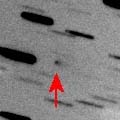
|
It was expected to reach to 13 mag in winter. But actually, it was still so faint as 17.6 mag on Sept. 23 (Ken-ichi Kadota), much fainter than expected. It will brighten rapidly in the morning sky after this. It will be observable in an excellent condition in November and December. However, it may be 14.5 mag at best, or even fainter.
Date(TT) R.A. (2000) Decl. Delta r Elong. m1 Best Time(A, h)
Oct. 14 6 50.53 7 52.0 1.188 1.645 97 16.1 3:52 (211, 42)
Oct. 21 7 3.62 9 35.7 1.116 1.631 100 15.8 3:41 (209, 41)
|
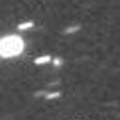
|
It is outside of Jupiter's orbit, so it keeps observable for a long time. Now it is 15.8 mag (June 2, Ernesto Guido and Giovanni Sostero). In 2006, it is still faint and locating somewhat low. But in 2007 and 2008, it is expected to be bright as 14.5-15 mag. It will locate high at that time, so it may be visible visually.
Date(TT) R.A. (2000) Decl. Delta r Elong. m1 Best Time(A, h)
Oct. 14 18 32.18 -21 3.1 6.640 6.491 77 15.8 19:40 (101, 52)
Oct. 21 18 31.57 -20 45.3 6.738 6.466 70 15.8 19:48 ( 95, 45)
|
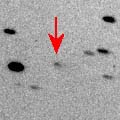
|
It becomes brightest about 4 months after the perihelion passage. It brightened up to 16.7 mag in mid September. It will reach to 15.5 mag and will be observable in good condition from November to January.
Date(TT) R.A. (2000) Decl. Delta r Elong. m1 Best Time(A, h)
Oct. 14 5 55.54 15 5.4 1.346 1.945 111 16.2 3:52 (191, 39)
Oct. 21 6 0.82 15 5.2 1.302 1.964 116 16.0 3:41 (187, 40)
|

|
Appearing at dawn. Although it has not been observed since April, it must be already bright as 16.5 mag. It is observable at 15.5-16 mag until next spring. But, in the Northern Hemisphere, it locates somewhat low at 20-30 degree high.
Date(TT) R.A. (2000) Decl. Delta r Elong. m1 Best Time(A, h)
Oct. 14 8 33.38 -19 4.7 4.330 4.081 69 16.3 3:52 (262, 45)
Oct. 21 8 30.72 -20 36.4 4.206 4.063 74 16.2 3:41 (261, 49)
|
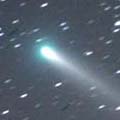
|
It reached to 6 mag at best in early May at the remarkable approach to the earth, when it became double naked eye comets with the component B around the zenith. Now it is going away from the earth and fading. It has already faded down to 13.9 mag (Sept. 27, Seiichi Yoshida). It will be too faint to see visually soon. However, it can be much brighter than this ephemeris. The component B has faded out rapidly since June, and already so faint, fainter than 17 mag.
Date(TT) R.A. (2000) Decl. Delta r Elong. m1 Best Time(A, h)
Oct. 14 0 50.09 -15 44.9 0.955 1.908 155 16.5 23:17 (180, 71)
Oct. 21 0 41.89 -14 54.0 1.043 1.972 150 16.9 22:42 (180, 70)
|
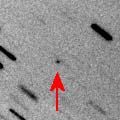
|
Although it was so faint as 20.7 mag on Aug. 2 (P. Birtwhistle), it brightened up to 17.9 mag on Sept. 18 (Ken-ichi Kadota). The condition of this apparition is excellent. It will brighten furthermore rapidly after this, and it is expected to reach to 16.5 mag in October and November.
Date(TT) R.A. (2000) Decl. Delta r Elong. m1 Best Time(A, h)
Oct. 14 4 51.30 32 15.5 0.659 1.474 124 16.7 3:22 (180, 23)
Oct. 21 5 0.44 37 35.3 0.628 1.468 127 16.5 3:04 (180, 18)
|
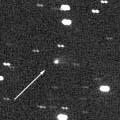
|
It kept 16.5 mag for a year and a half since early 2005. It will start fading after November, and will be fainter than 18 mag at the end of 2006.
Date(TT) R.A. (2000) Decl. Delta r Elong. m1 Best Time(A, h)
Oct. 14 23 49.32 38 42.0 3.035 3.884 143 16.6 22:17 (180, 16)
Oct. 21 23 43.85 36 2.9 3.078 3.920 143 16.7 21:44 (180, 19)
|

|
Peculiar asteroid moving along an orbit like a comet. It is at opposition in October. It will reach to 16.5 mag and will be observable in excellent condition.
Date(TT) R.A. (2000) Decl. Delta r Elong. m1 Best Time(A, h)
Oct. 14 1 7.17 -3 16.6 1.372 2.358 168 16.7 23:35 (180, 58)
Oct. 21 1 3.73 -4 29.1 1.360 2.328 162 16.7 23:04 (180, 60)
|

|
It was observed at 17 mag in spring. It will be observable in good condition at 17 mag again in autumn. It will be fainter than 18 mag in December.
Date(TT) R.A. (2000) Decl. Delta r Elong. m1 Best Time(A, h)
Oct. 14 4 48.17 7 46.7 1.428 2.183 127 16.7 3:20 (180, 47)
Oct. 21 4 20.84 3 19.0 1.379 2.235 139 16.7 2:26 (180, 51)
|
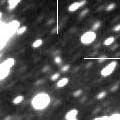
|
It keeps 17 mag for a long time after this until the end of 2007. It will be observable in good condition in 2006 autumn and 2007 autumn.
Date(TT) R.A. (2000) Decl. Delta r Elong. m1 Best Time(A, h)
Oct. 14 19 37.38 41 27.6 3.429 3.724 99 16.9 19:40 (162, 11)
Oct. 21 19 43.59 40 22.7 3.447 3.706 97 16.9 19:48 (157, 9)
|
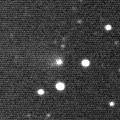
|
It was bright as 15 mag in 2004 and 2005. Now it is far away from the sun, but it is still observed at 17 mag in 2006.
Date(TT) R.A. (2000) Decl. Delta r Elong. m1 Best Time(A, h)
Oct. 14 0 44.93 -16 38.1 3.208 4.129 154 17.2 23:12 (180, 72)
Oct. 21 0 40.62 -16 43.4 3.261 4.146 148 17.2 22:41 (180, 72)
|
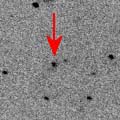
|
It is outside of Jupiter's orbit. So it keeps 16.5-17.5 mag for a long time until 2008. In 2006, it keeps observable in good condition until November.
Date(TT) R.A. (2000) Decl. Delta r Elong. m1 Best Time(A, h)
Oct. 14 20 35.50 -13 20.8 5.800 6.171 107 17.2 19:40 (157, 67)
Oct. 21 20 33.02 -12 58.4 5.906 6.156 99 17.2 19:48 (138, 62)
|
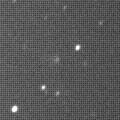
|
It reached up to 16 mag in 2005 summer in the Southern Hemisphere. It was 16.6 mag on Sept. 19 (Mitsunori Tsumura), a bit brighter than this ephemeris. It will keep 17.5 mag until January after this. Then it will be fainter than 18 mag in February.
Date(TT) R.A. (2000) Decl. Delta r Elong. m1 Best Time(A, h)
Oct. 14 5 48.74 -23 11.1 4.370 4.749 106 17.3 3:52 (209, 77)
Oct. 21 5 46.91 -23 22.3 4.334 4.784 111 17.3 3:41 (191, 78)
|

|
It keeps 17.5 mag until November. Then it fades out soon.
Date(TT) R.A. (2000) Decl. Delta r Elong. m1 Best Time(A, h)
Oct. 14 1 28.66 -14 52.2 2.254 3.196 156 17.3 0:01 (180, 70)
Oct. 21 1 21.27 -14 5.1 2.282 3.211 154 17.4 23:21 (180, 69)
|
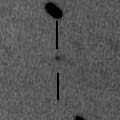
|
The perihelion passage is in 2008. It will be observable for several years after this at around 17 mag. But it may fade out rapidly just after the perihelion passage.
Date(TT) R.A. (2000) Decl. Delta r Elong. m1 Best Time(A, h)
Oct. 14 4 54.48 10 54.0 4.181 4.835 125 17.5 3:26 (180, 44)
Oct. 21 4 53.21 10 48.7 4.088 4.822 132 17.4 2:57 (180, 44)
|

|
It keeps 17 mag until January. Then it keeps observable util April when it becomes fainter than 18 mag.
Date(TT) R.A. (2000) Decl. Delta r Elong. m1 Best Time(A, h)
Oct. 14 4 52.21 48 26.7 3.299 3.885 119 17.5 3:24 (180, 7)
Oct. 21 4 51.52 49 18.3 3.221 3.878 124 17.4 2:55 (180, 6)
|
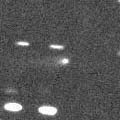
|
It was observed at 17 mag in late 2005. In 2006 autumn, it became observed again. It will be observable at 17.5 mag in good condition until November.
Date(TT) R.A. (2000) Decl. Delta r Elong. m1 Best Time(A, h)
Oct. 14 1 58.40 22 57.6 4.489 5.445 161 17.5 0:31 (180, 32)
Oct. 21 1 48.24 22 20.6 4.483 5.461 168 17.5 23:48 (180, 33)
|

|
It reached to 6 mag in 2004. It had been visible visually until January. It has already faded down to 17.2 mag (Aug. 9, Ken-ichi Kadota). It will be fading slowly around 17-18 mag until December.
Date(TT) R.A. (2000) Decl. Delta r Elong. m1 Best Time(A, h)
Oct. 14 2 45.40 -3 41.8 7.114 8.027 154 17.5 1:17 (180, 59)
Oct. 21 2 41.18 -3 58.6 7.144 8.083 159 17.5 0:45 (180, 59)
|

|
Peculiar asteroid moving along an orbit like a comet. It was observed at 17 mag in February and March. It will be observable at 17 mag again in October and November. But it will fade out soon.
Date(TT) R.A. (2000) Decl. Delta r Elong. m1 Best Time(A, h)
Oct. 14 4 46.17 39 20.4 1.501 2.214 123 17.9 3:19 (180, 16)
Oct. 21 4 7.82 38 42.7 1.421 2.253 136 17.6 2:13 (180, 16)
|

|
It is observable at 18 mag in 2006 autumn. It will reach to 15 mag two years later.
Date(TT) R.A. (2000) Decl. Delta r Elong. m1 Best Time(A, h)
Oct. 14 2 24.43 8 6.2 3.563 4.526 162 17.9 0:56 (180, 47)
Oct. 21 2 20.39 7 47.8 3.535 4.519 170 17.8 0:25 (180, 47)
|
|
![]()
 C/2006 L2 ( McNaught )
C/2006 L2 ( McNaught ) 29P/Schwassmann-Wachmann 1
29P/Schwassmann-Wachmann 1 D/1986 W1 ( Lovas 2 )
D/1986 W1 ( Lovas 2 ) P/1991 V1 ( Shoemaker-Levy 6 )
P/1991 V1 ( Shoemaker-Levy 6 ) P/2006 HR30 ( Siding Spring )
P/2006 HR30 ( Siding Spring ) 71P/Clark
71P/Clark C/2005 E2 ( McNaught )
C/2005 E2 ( McNaught ) C/2003 WT42 ( LINEAR )
C/2003 WT42 ( LINEAR ) C/2005 YW ( LINEAR )
C/2005 YW ( LINEAR ) 117P/Helin-Roman-Alu 1
117P/Helin-Roman-Alu 1 (3200) Phaethon
(3200) Phaethon 114P/Wiseman-Skiff
114P/Wiseman-Skiff 52P/Harrington-Abell
52P/Harrington-Abell 76P/West-Kohoutek-Ikemura
76P/West-Kohoutek-Ikemura C/2005 L3 ( McNaught )
C/2005 L3 ( McNaught ) 84P/Giclas
84P/Giclas C/2005 EL173 ( LONEOS )
C/2005 EL173 ( LONEOS ) 73P-C/Schwassmann-Wachmann 3
73P-C/Schwassmann-Wachmann 3 112P/Urata-Niijima
112P/Urata-Niijima C/2005 B1 ( Christensen )
C/2005 B1 ( Christensen ) 2006 QL39
2006 QL39 C/2006 CK10 ( Catalina )
C/2006 CK10 ( Catalina ) C/2006 M1 ( LINEAR )
C/2006 M1 ( LINEAR ) P/2004 F3 ( NEAT )
P/2004 F3 ( NEAT ) C/2005 S4 ( McNaught )
C/2005 S4 ( McNaught ) C/2004 L2 ( LINEAR )
C/2004 L2 ( LINEAR ) P/2006 S4 ( Christensen )
P/2006 S4 ( Christensen ) 173P/2005 T1 ( Mueller 5 )
173P/2005 T1 ( Mueller 5 ) P/2005 SB216 ( LONEOS )
P/2005 SB216 ( LONEOS ) C/2005 R4 ( LINEAR )
C/2005 R4 ( LINEAR ) C/2003 K4 ( LINEAR )
C/2003 K4 ( LINEAR ) 2006 BZ8
2006 BZ8 74P/Smirnova-Chernykh
74P/Smirnova-Chernykh![]()


























